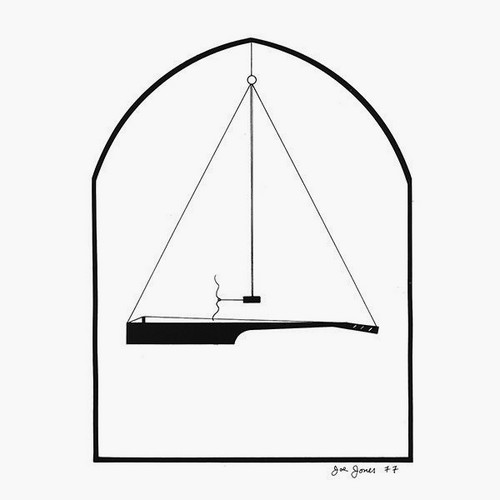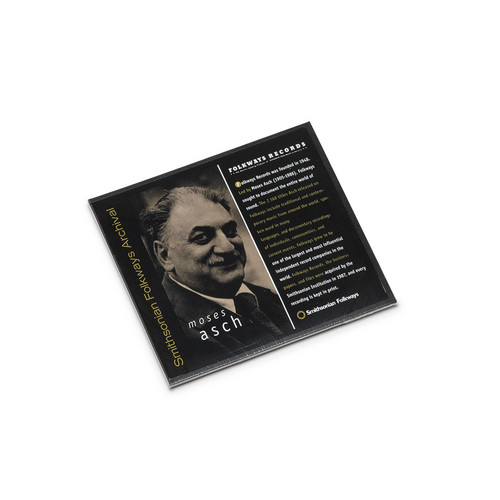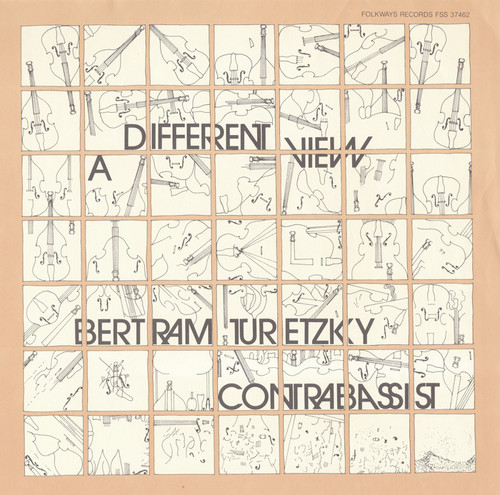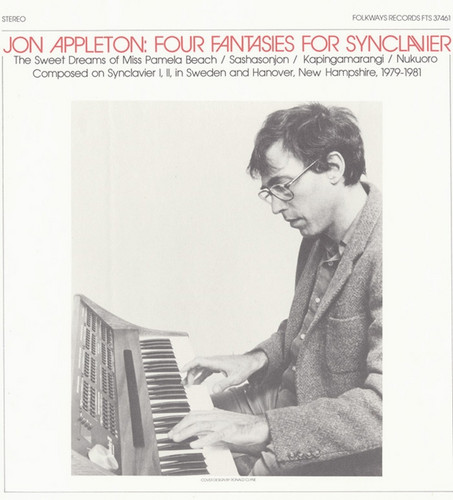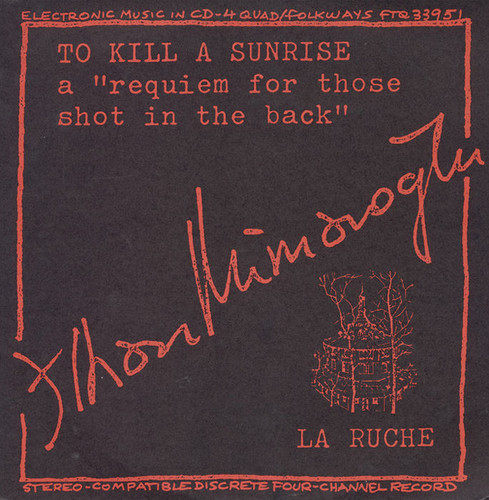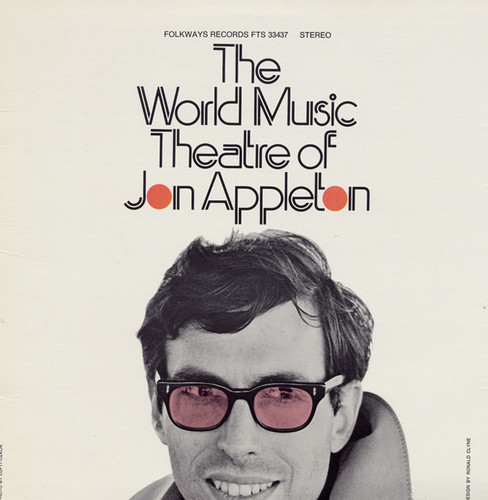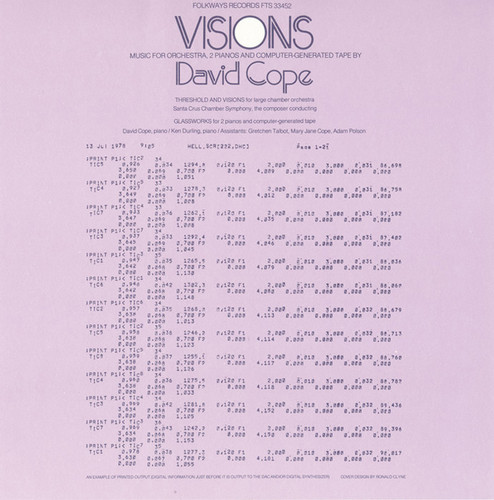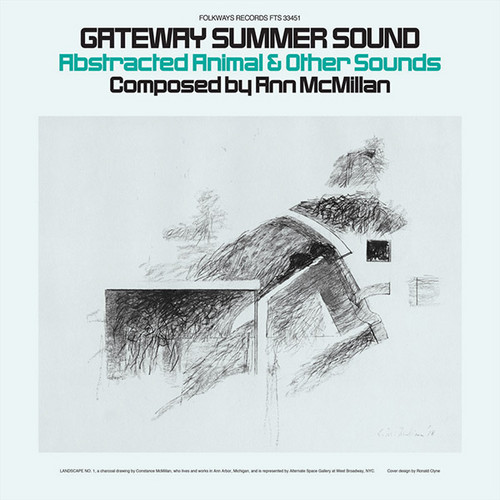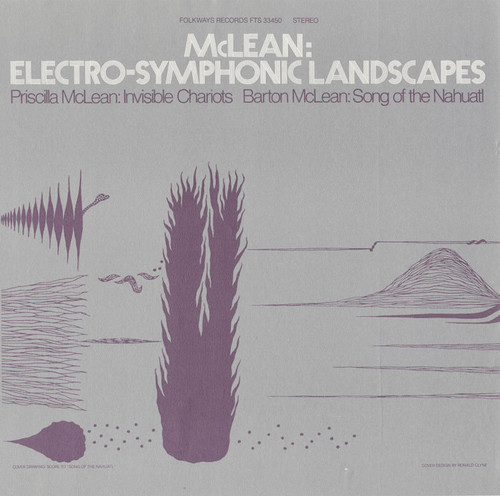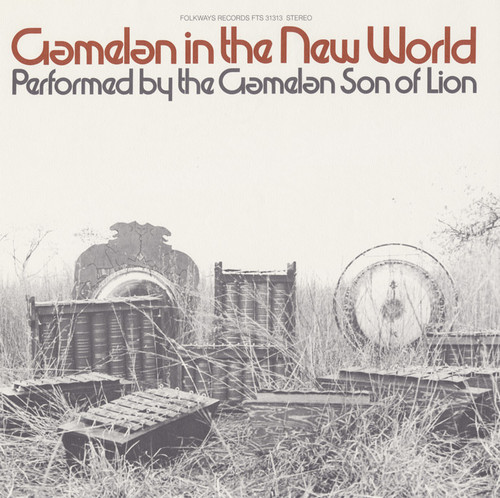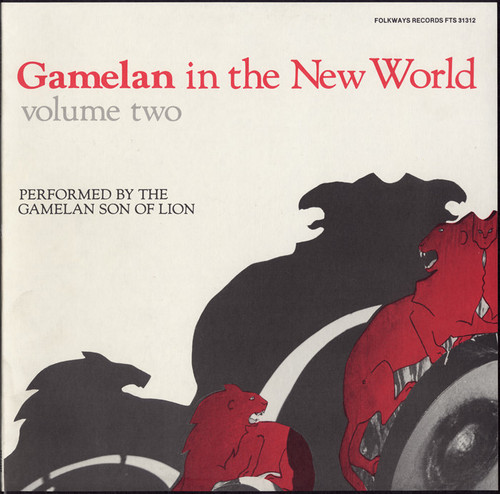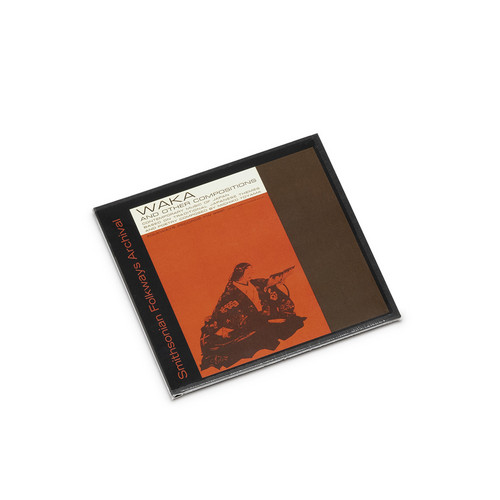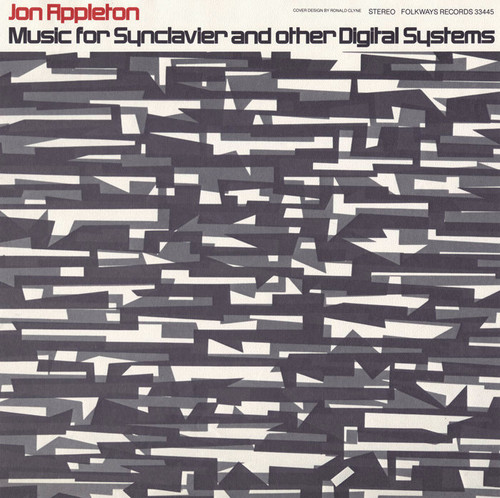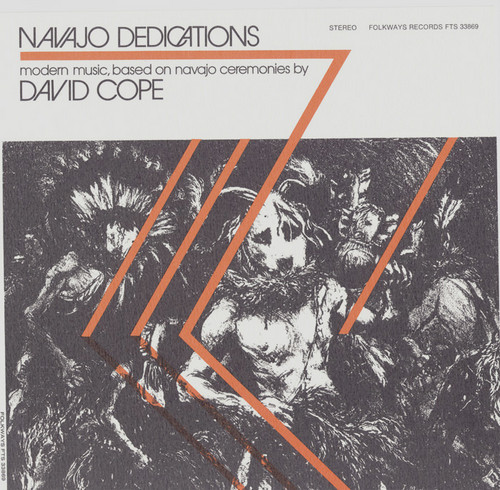Back in stock
In Performance
Lucky restock! After studying with composers John Cage and Earle Brown, Joe Jones became a prominent figure in Fluxus, contributing to the movement’s first “yearbox” alongside La Monte Young, György Ligeti and Nam June Paik. Beginning in late 1961, Jones began constructing his own music machines – drawing inspiration from the calliopes, automata and orchestrions of the 19th and early 20th century to create self-playing ensembles of stringed instruments, percussion and woodwinds – “played” throug…
Seven Flute Solos
2024 stock. Employing tape overdubs, shifting tape speeds, reverberation, and echoes, flautist Charles Campo performs seven improvisational compositions. The musical settings range from pastoral and contemplative to urban and ethereal.
A Different View
*2024 stock* Contrabass (double bass) solo virtuoso Bertram Turetzky performs seven solos on the contrabass in this 1981 release. Using bow, plucking strings, tapping on the instrument’s wood body, and employing a little audio technology, Turetzky demonstrates the full range of musical sounds that can be produced on the contrabass. His repertoire on this recording includes a piece dedicated to him (“The Last Contrabass in Las Vegas”), two of his own compositions, and the Lennon-McCartney ballad …
Four Fantasies For Synclavier
*2024 stock* In this 1982 Folkways release, Jon Appleton plays four compositions written for the Synclavier, a digital synthesizer he helped to develop in the late 1970s. “The Sweet Dreams of Miss Pamela Beach” was recorded in a studio using a 24-track recorder to “layer” portions of the music. The remaining three pieces were performed live with “some small sections and accompaniments contained in the digital memory of the instrument at the time of performance.” Liner notes contain brief descrip…
To Kill a Sunrise and La Ruche
**2020 stock** Turkish-born musician and composer Ilhan Mimaroglu worked extensively with electronic (tape) music. The two programmatic pieces paired here are "To Kill a Sunrise," a dirge subtitled "Requiem for Those Shot in the Back" with words borrowed from a poem by Guatemalan guerilla poet Marco Antonio Flores, composed in Columbia-Princeton Electronic Music Center (New-York, N.Y., 1974). And "La Ruche" composed at Groupe de Recherches Musicales (Paris, France, 1968) an experiment of reminis…
The World Music Theatre of Jon Appleton
**2020 stock** This 1974 recording by electro-acoustic music composer Jon Appleton is designed to take the listener to different musical landscapes. Appleton notes differences in context that will make the music more and less effective (“not everything I intended will be heard by the listener because no two listeners share the same aural experiences…because we are continually expanding our aural vocabulary, the sounds used assume a different significance as time passes”). Liner notes contain a b…
Visions - Music for Orchestra, 2 Pianos and Computer-Generated Tape
**2020 stock** This 1979 record is a five-movement composition for large chamber orchestra by David Cope. First presented by the Santa Cruz Chamber Symphony in 1978, the work attempts to demonstrate the relationships between sound and physical space and to translate them to recorded sound as well as performance. The tapes in the piece were composed at Stanford’s Artificial Intelligence Laboratory and were “spliced” digitally rather than physically. Liner notes contain drawings of the way that Co…
Gateway Summer Sound: Abstracted Animal and Other Sounds
**2020 stock** Ann McMillan did not record prolifically, but she was at the vanguard of electronic composition in New York in the 1970s. A student of groundbreaking composer Edgard Varèse, McMillan’s primary medium was magnetic tape, which she manipulated to create surreal soundscapes. On Gateway Summer Sounds, her debut album released on Folkways in 1979 and recorded at the legendary Princeton-Columbia Electronic Music Center, she sources sounds from the natural world – frogs, insects, field re…
Electro-Symphonic Landscapes
**2020 stock** This 1979 album, by the husband and wife composing-performing electronic music duo of Priscilla and Barton McLean, showcases two pieces, “Invisible Chariots” by Priscilla and “Song of the Nahuatl” by Barton. Begun in 1975 and completed in 1977, “Invisible Chariots” is a three-movement piece, named after a Carl Sandburg poem, about the “intuitive creative force” that shapes composition. Composed in 1976, “Song of the Nahuatl” was underwritten by a grant from the National Endowment …
Gamelan in the New World, Vol. 1
**2020 stock** This album is a compilation of avant-garde art music performed by Son of Lion, an American Gamelan Orchestra that uses traditional Indonesian instruments as well as found objects (hubcaps, foodcans) in its music. The liner notes feature diagrams and/or descriptions of each piece that explain the nature of its unique composition. For example, Elena Carey describes the four nitrogen bases of D.N.A. and an analysis of the relationship between this raw genetic material her Gamelan mus…
Gamelan in the New World, Vol. 2
**2020 stock** Gamelan in the New World: Vol. 2, released in 1982, is a teaching album, providing the listener with lyrics, scales, and a history of Indonesian music culture. Gamelan Son of Lion play keyed instruments that are constructed in the Javanese style. The group uses both the pelog and slendro tuning systems, sometimes in conjunction with one another within a single composition. The group is composed of ethnomusicologists and instrumentalists who are dedicated to playing and preserving …
Mushroom Ceremony of the Mazatec Indians of Mexico
**2020 stock** Recorded on the night of July 21/22, 1956 by V.P. & R. Gordon Wasson, these are rough and ready field recordings featuring the voice of Maria Sabina (1894-1985) a Mexican curandera who would perform healing vigils known as veladas in Huautla de Jimenez, Oaxaca where all participants would ingest psilocybin mushrooms (Maria's holy children), as a sacrament to open the gates of the mind and communicate with the sacred. María Sabina (July 22, 1894, Huautla de Jiménez, Oaxaca, Mexico …
Waka and Other Compositions: Contemporary Music of Japan
2024 stock. This 1960 release is a selection of compositions by Japanese experimental composer Michiko Toyama. The 12 compositions are drawn from traditional Japanese musical forms with additional influence from many of the experimental composers in the West that were active during the twentieth century. Some pieces are sung with instrumental accompaniment; others are spoken poetry. The instrumentation consists of a mix of traditional Japanese and modern Western instruments, including electronic…
Futuribile (The Life To Come)
*2024 stock* What did the future sound like in 1980? Futurible is brought to you by Italian composer Gianni Safred and will take you both back in time and into the future. Safred uses Moog and Arp synthesizers that have now become commonplace in popular music. These sounds are "suitable for space travels, space explorers, experiments, fantastic adventures, future enterprises, interplanetary stories, important achievements, industrial accomplishments of broad implication… modern scientific discov…
The Minexcio Connection: Live at the Rosendale Cafe
One of the most unexpected yet fruitful partnerships of recent years: in the mid-1990s, Pauline Oliveros, electronic music pioneer and sage of the environmental drone, began working with Reynols, the prolific and resolutely undefinable Argentinian group. Their first joint effort sent Oliveros' music through the rigours of Reynols' heavily processed studio treatments.
The Minexcio Connection: Live! At The Rosendale Cafe finds them collaborating on-stage in real time. Recorded in August 2000 duri…
Eight electronic pieces
**2020 stock** Chance combinations, accidental themes, chaos in general—these are the musical modes that Tod Dockstader uses in composing electronic pieces. Blending oscillating electronic sounds with natural sounds is like being "confronted with a potential orchestra of thousands of instruments," he says, and the task becomes one of "improvising."
This CD is a custom made copy from Smithsonian Folkways collection. Every effort has been made to preserve its historical and aural integrity. The or…
Music for Synclavier and Other Digital Systems
**2020 stock** Electro-acoustic musician/composer Jon Appleton plays a variety of digital instruments which, in his words, “obtain timbres and textures which convey expressive character through my work.” Instruments used in this recording are the Dartmouth Digital Synthesizer, the Synclavier, and the MUSSE of Sweden’s Stiftelsen Elektronmusikstudion Stockholm. The five pieces span the years 1974 to 1977 and include Appleton’s first digital piece “Zoetrope.” Liner notes include short introduction…
The Mermaid's Purse: Live at Chatham College, 1976
In 1976 the Entourage Music and Theater Ensemble reached a creative zenith. The nomadic troupe had just released The Neptune Collection, its iconic second album for Moses Asch’s Folkways Records, and decided to present the music to audiences across the rust belt in its most miasmic, elemental form. Extended stretches of full-group improvisation mingled with folk-tune like melodies during these performances, which featured multiple dancers spontaneously interpreting the music, at times in elabora…
Navajo Dedications
**2020 stock** This 1976 Folkways release by David Cope presents modern music based on Cope’s intensive research into—and respect for—Navajo ceremonies, and Navajo music in particular. Ranging from pieces for large chamber ensemble to a work scored for a single performer, the four compositions are unique interpretations of Native American Indian myths and culture. The liner notes include detailed explanations of the inspiration, organization, and arrangement of each of these complex works.
This …
Israeli Electroacoustic Music
**2020 stock** Israeli Electroacoustic Music collects the works of six musicians from varied backgrounds, all recognized for their musical activity in electronic music and in Israel at the time of the album’s recording in 1981. These composers exemplify atonal 20th century music and musique concrete in a mixture of acoustic and electronic instrumentation, ranging from album producer Robin Julian Heifetz’s dark and frantic A Clear and Present Danger (which “attempts to symbolize the fear of a mot…
